The claim
Our conclusion
The 270,000 watts are the possible charging peak. The 25 minutes to fully charge via HPC cover the charge level range from 5 to 90 percent. But the comparison with washing machines is not at all correct. The order of 10 high-performance machines or 110 household machines is more likely. But in general: it's quite an apples-to-oranges comparison.
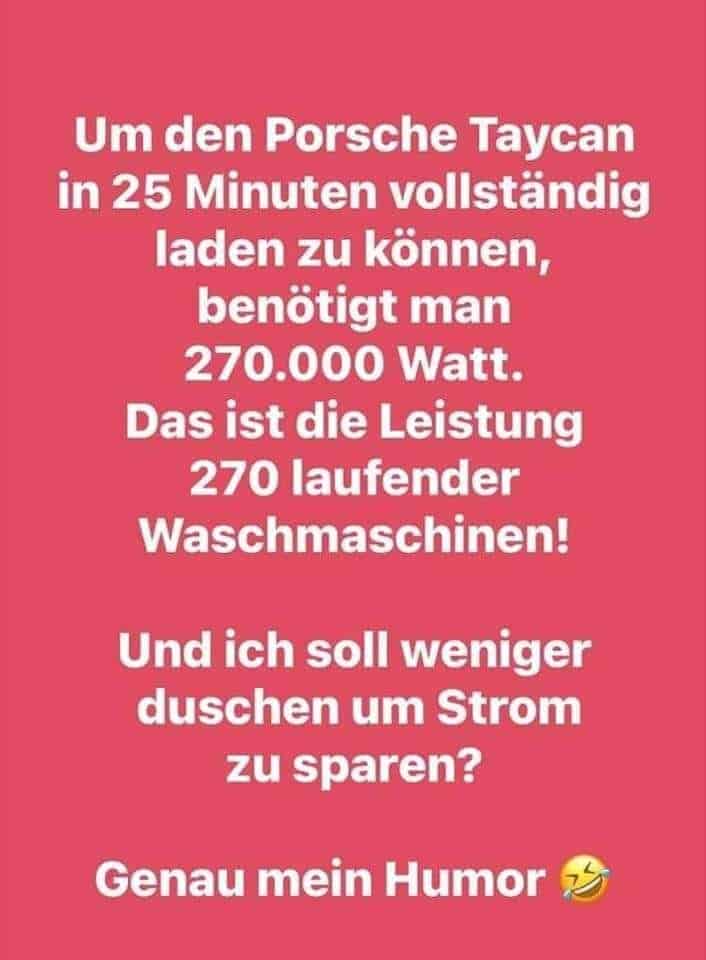
This sharepic keeps making the rounds in various Facebook and Telegram groups that have one thing in common: they hate the Greens, Fridays for Future, the energy transition and electric cars. Instead, a lot of understanding is shown for Russia's war policy or the inhumane politics of the AfD. But what's the deal with the milkmaid bill?
The Porsche Taycan: from 5 to 80 (percent) in 17 minutes
First of all, a clarification: Watt (W) or kilowatt (kW) is a measure of electrical power. Kilowatt hour (kWh), on the other hand, is the measure of an amount of energy and in this context the capacity of the electric car battery. So you don't “need” 270 kW of direct current to charge the Porsche with the Performance Battery Plus, but that is the highest power peak when charging HPC charging station Depending on the provider, high power charging stations deliver up to 350 kilowatts. That's 20 percent more power than the highest-charging batteries currently manage.
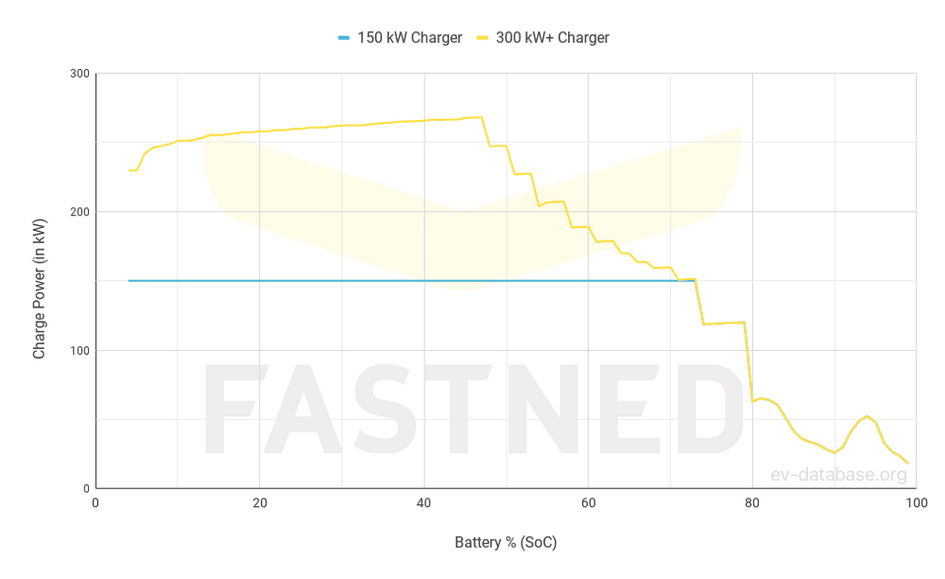
The charging curve above shows that the Porsche battery can be charged very quickly between a charge level of 5% and 50%, after which the curve drops off. Full charging once on the go is usually specified for the range from 5 to 80 percent. This takes about 17 minutes with a “Performance Battery Plus” and a charging station that can deliver at least 270 KW. Five minutes of charging results in an average journey of around 100 kilometers. The 5 to 80% correspond to a used battery capacity of 84 kilowatt hours (of the maximum 93 kWh).
By the way, an electric car charges with variable voltages. Most cars are designed for peaks of 400 volts DC, a powerful Porsche Taycan is designed for 800 V DC . If an electric vehicle is charged at home in the garage, this happens via the “on-board charger”, i.e. the rectifier, which is part of the battery electrical system in the vehicle. With a normal household socket you can charge with a maximum of 2.3 kW, with the type 2 plug up to 22 kilowatts depending on the number of phases. This corresponds to charging times of 4h30m up to 43 hours. Charging at the HPC station, on the other hand, is done directly with direct current and a CCS plug; this requires its own power infrastructure.
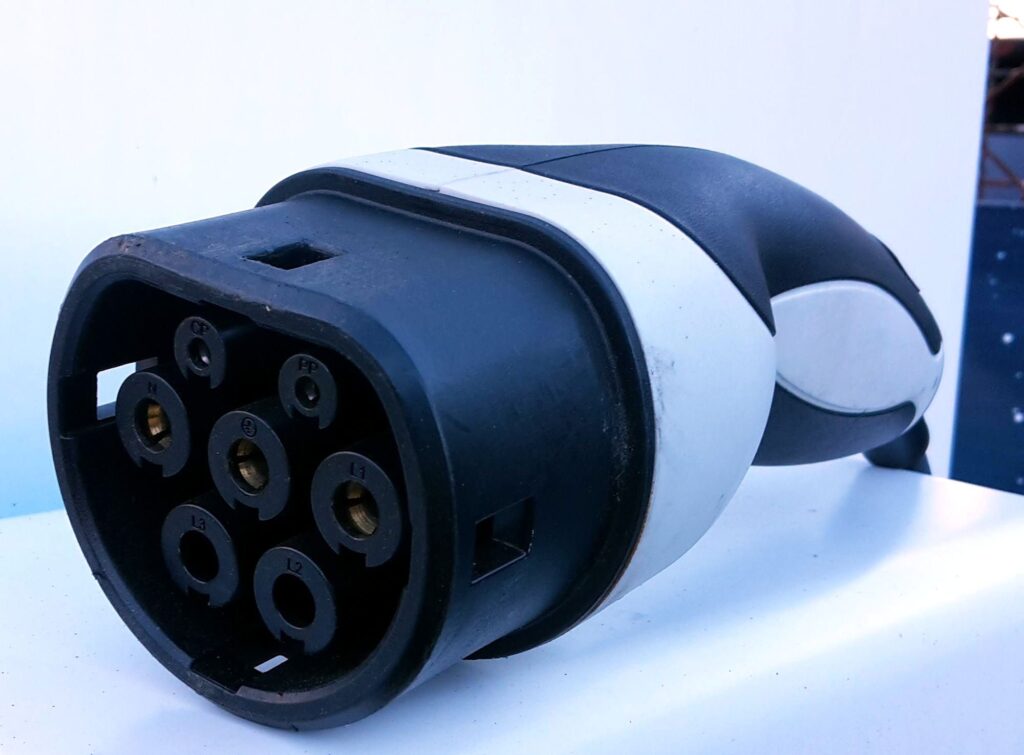 Type 2 connector | Hadhuey, CC BY-SA 4.0
Type 2 connector | Hadhuey, CC BY-SA 4.0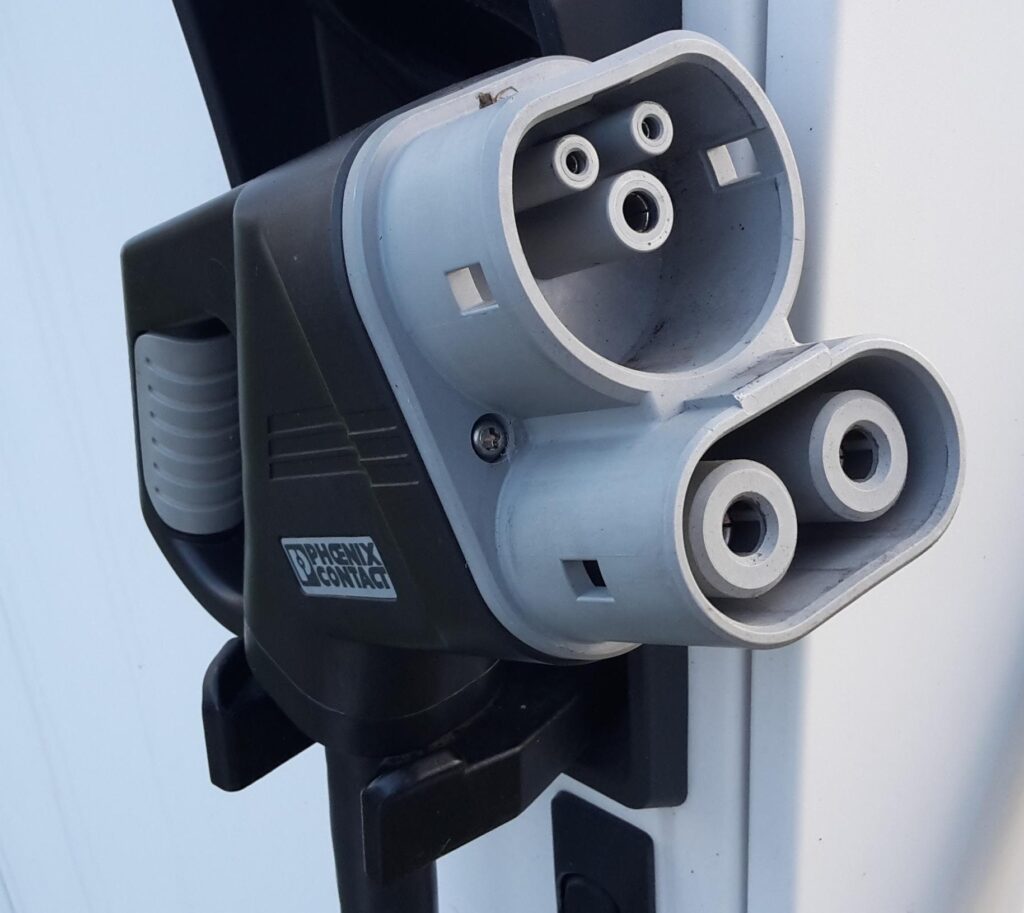 CSS connector | Hadhuey, CC BY-SA 4.0
CSS connector | Hadhuey, CC BY-SA 4.0
Washing with the Golf and the Porsche among the washing machines
A classic household machine is designed so that it can run on a normal power connection. A typical machine like the Miele WMH 260 WPS draws up to 2400 watts from the power grid (230 V AC). However, this value is only a consumption peak when the heating coil and the drive motor require electricity. A standard wash cycle with this machine takes just under three hours and uses 0.8 kWh of electricity.
If you really want to get involved in the apples-and-oranges comparison between a car and a washing machine, you first have to consider what exactly you want to compare. A standard charging process (5-80%) of the Porsche Taycan Plus on an HPC column charges it with 83.7 kilowatt hours of energy. This process takes 17 minutes and loads the DC connection with a maximum of 268 kW. A Miele WMH 260 WPS uses 0.8 kWh of electricity for a standard load of laundry (8 kilograms of laundry, 60 degrees Celsius), which takes 179 minutes and loads the AC connection with a maximum of 2.4 kW.
The comparison shows that the Miele is connected to the network for 10.5 times as long. However, the Porsche has a peak power consumption that is 112 times as high and electricity consumption that is 105 times as high. But: The Porsche is a sports car, the Miele is, if you want to put it that way, middle class. So what about a sports car among washing machines? If you type high-performance washing machine into Google, one of the first suggestions is the Diamond DRW30-TS.
This commercial model can handle 30 kg of laundry per load and has a connected load of 28 kW, i.e. the maximum consumption at peak power when all four heating elements and the drum motor are running. The standard program consumes a total of 12 kWh of energy. In comparison, the Porsche has almost 10 times as much peak power consumption and 7 times as much power consumption.
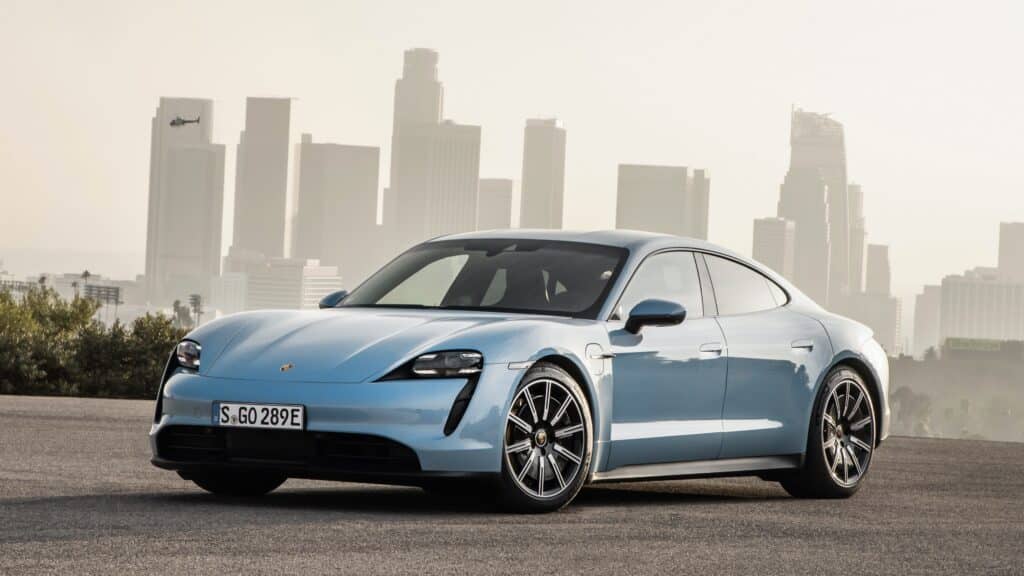 Porsche Taycan 4S
Porsche Taycan 4S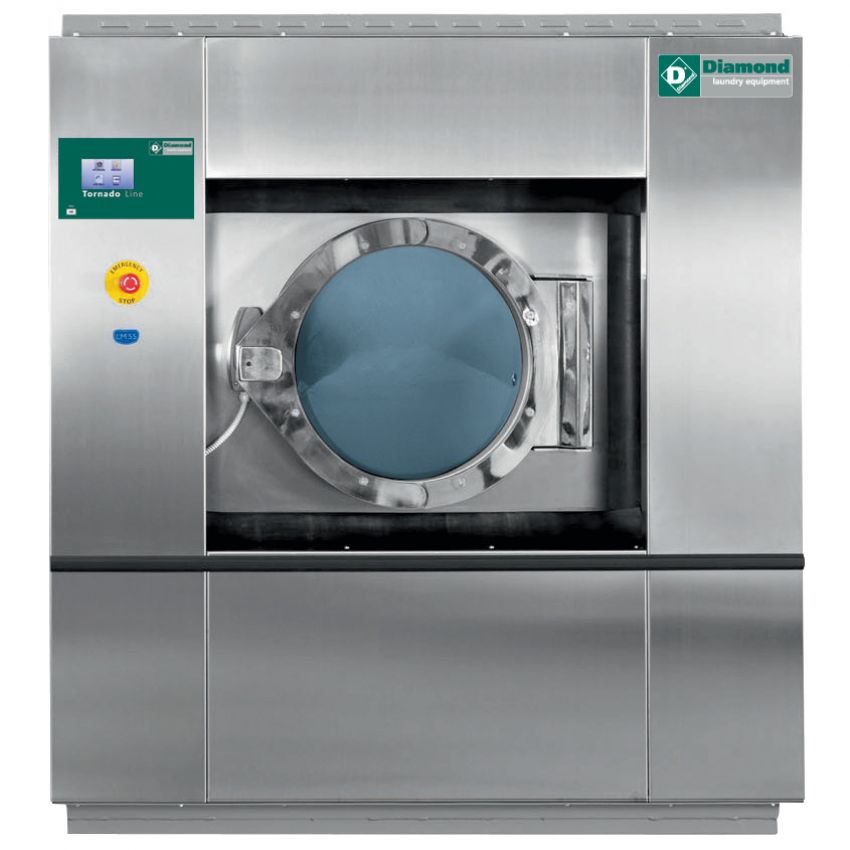 Diamond DRW30-TS
Diamond DRW30-TS
CONCLUSION
The sharepic numbers don't make any sense. The unit Watt stands for a power consumption; it would be better to specify the amount of energy charged in kilowatt hours. If you still really want to compare apples with pears, you would be looking at 110 household washing machines or 10 high-performance machines, such as those used commercially.
By the way: For the price of a Porsche Taycan you get around 200 new washing machines. But things get very tight in the garage.
Update: October 4, 2022
Attentive readers have drawn our attention to another sharepic with a similar comparison: Thank you!
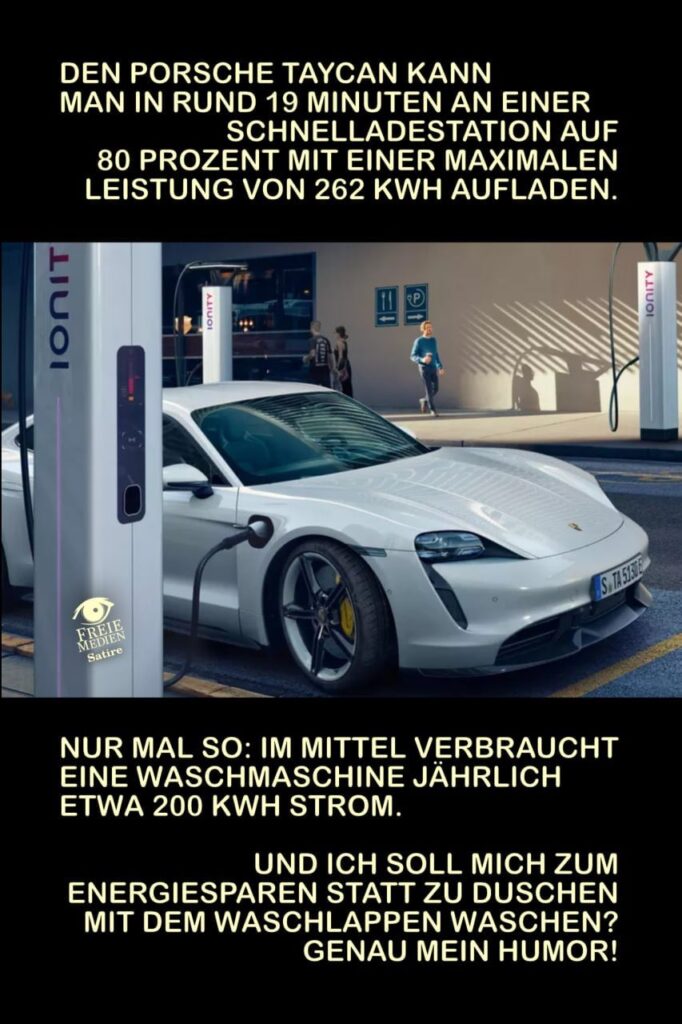
As explained above, the two units kW (power) and kWh (amount of energy and battery capacity) are again confused here. The battery of the Porsche Taycan only holds a maximum of 93 kilowatt hours and charges between 5 and 80% of the 84 kWh already mentioned. The statement “On average, a washing machine uses 200 kWh of electricity per year” is roughly true, at least if you wash more than 200 times and not just with Eco and 40 °C, as this electricity calculator shows.
By the way, the shower is the second largest energy consumer in a household - right after the heating system. On average, Germans shower for around 11 minutes, which corresponds to the consumption of 176 liters of water and 6.1 kWh of energy . For one quick charge of the Porsche Taycan on the HPC column, you could shower every day for two weeks. In comparison, around 64 liters of Super Plus fit into the tank of the Porsche 911. With a calorific value of around 8.5 kWh/L, that is 544 kilowatt hours. And that's three months of daily showering.
Sources:
https://www.eon.de/frag-eon/themen/e-mobilitaet/article/was-ist-der-vergleich-zwischen-schnelllade-und-hpc-ladesae
https://ev-database.de/pkw /1394/Porsche-Taycan-Plus (charging data for the Porsche Taycan)
https://newsroom.porsche.com/de/produkte/taycan/batterie-18541.html (battery for the Porsche Taycan)
https://www.vs-elektro .net/out/media/wmh260.pdf (Miele washing machine data)
http://www.cuisimat-doc.be/catalog/pdfdocs/DRW30TSDBBME1.pdf (Diamond washing machine data)
https://stromrechner.com/stromverbrauch -washing machine
https://www.energieverbraucher.de/de/duschen__1519
By the way: “You should drive a Porsche” Lindner quote is wrong – and punishable
Notes:
1) This content reflects the current state of affairs at the time of publication. The reproduction of individual images, screenshots, embeds or video sequences serves to discuss the topic. 2) Individual contributions were created through the use of machine assistance and were carefully checked by the Mimikama editorial team before publication. ( Reason )

